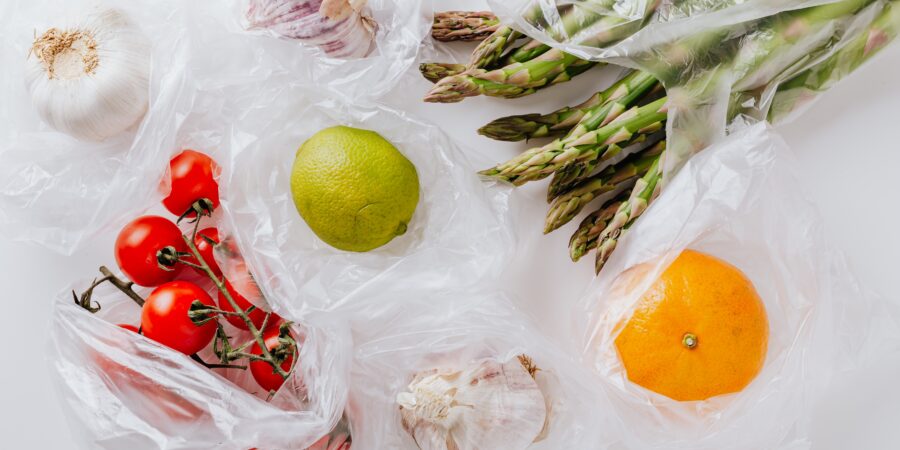The Hidden Health Risks of Food Labels and Wraps.
Our societies are getting fatter. Some people see this adiposity as a health issue, some as a cosmetic one. But truth be told, our metabolic processes are more mysterious than we realise.
Last year, the prestigious Nature Journal reported that plastic is still one of the fastest growing materials with production increasing and estimated to be more than one billion tonnes a year by 2050!
As some of you know, I was born in England and my parents went to India when I was young and worked in medical mission hospitals in rural and semi-rural India. I had never seen plastic bags or food packaging growing up, and there used to be an archetypal yellow cloth bag that everyone used after shopping for groceries, or indeed anything. This yellow bag (Tamil translation Manja pai) was not only widely used but was also seen as a sign of good luck. After I left India and was back living in Western societies, I saw plastic shopping bags everywhere. Over the past two decades as environmental concerns grew about plastic in our oceans, I was interested (and horrified) to see that—when I went back after two decades for the launch of my first novel, Cool Cut (Picador)—plastic was everywhere in India—bags, bottles, and food wrap! I did not see a single yellow bag in any of the shopping malls I visited, although I now see a modern reincarnation after India banned single used plastic bags in 2022.

Shopping bags aside, plastic is everywhere just as fat (obesity) is. Could the two be linked? This suggestion may appear like I am stringing a long bow, but a study looked at this very issue last year. The authors of this study considered the following facts:
- Since 1980, the number of adults considered obese in America has increased from 14% to 42%. Before we disparage American food, let me remind you that the New Zealand Ministry of Health website states: “New Zealand has the third highest adult obesity rate in the OECD, and our rates continue to increase. One in three adult New Zealanders (over 15 years) is classified as obese, and one in ten children.”
- Interestingly scientific research does not confirm that Americans are eating more and more each year. In fact, in recent times—with increasing health consciousness—people were cutting back their food intake. Since 2000, Americans appeared to be eating less and exercising more, but obesity levels kept going up! Why was this?
The title of the article in the American Journal of Clinical Nutrition was: “Obesity—an unexplained epidemic” and suggested that alternative hypotheses must be considered by the scientific community to explain what was causing this expansion of body mass—including looking at environmental, pollution and genetic factors. It was clear—even in New Zealand— that the current health approach of “there are no fat sheep in a concrete paddock” wasn’t somehow working for humans. What else could be responsible?
Taking this cue, a Norwegian group set out to look at human metabolic disruption caused by plastic. They studied the chemical composition of all plastic items that touch things we eat—yogurt cups, juice bottles, plastic wrap around meats and cheeses and even food wraps we use in kitchens. The crazy thing was this: While over 50,000 chemicals were identified, only around 600 were identifiable or even previously known! Many were simply mysterious compounds. Notably, there were phthalates and bisphenols, which we know disrupt our metabolic system and interfere with our bodies’ ability to regulate weight. But could wrapping and packaging touching our food and beverages be leaching into the products? Scarily, when researchers made these plastics come into contact with human cell cultures in the lab, many of these chemicals triggered fat cells to proliferate and produce more fat (adipogenesis) which is essentially the cause of obesity. And because these chemicals touch our food and supermarket produce regularly, it was disconcerting that the majority of these chemicals were untested, unknown, and therefore, unregulated. This 2022 Norwegian study, which was published in Ecotoxicology and Public Health concluded that their “study demonstrates that daily-use plastics contain potent mixtures of MDCs (metabolism-disrupting chemicals) and can, therefore, be a relevant yet underestimated environmental factor contributing to obesity.”
So we now had a smoking gun but where was the proof that plastic packaging in supermarkets and grocery stores actually gets into food? In 2023, a team from McGill University in Canada published a report in the same Ecotoxicology and Public Health Journal. They were particularly concerned about notoriously harmful chemicals called bisphenols. In their experiment, they wrapped fish in film with a thermal label for 5 days at 4 °C. Their report in the article states: “Significantly higher bisphenol S (BPS) migration was observed systematically from the films with thermal labels compared to plain films. This study provides evidence, for the first time, that BPS and alternative thermal label colour developers migrate from packaging materials into food.” This was especially interesting to the Canadian researchers because previously Canadian authorities had taken measures to reduce the use of Bisphenol A (BPA), a toxic chemical linked to prostate and breast cancer, in packaging and plastics. While BPA was linked to prostate and breast cancer, it is still unregulated in New Zealand. According to some industry groups while BPA is still not banned in New Zealand, it is best to note that usually:
- Rigid bottles often have BPA, flexible rubbery containers do not.
- Opaque plastic is OK, but if they are clear or clear-tinted, they may contain BPA.
- Older plastics, such as those made before 2012, are more likely to contain BPA.
- Clear items that say ‘unbreakable’ and ‘microwave/ dishwasher safe’ are likely BPA.
Because of this ban on BPA due to health risks, manufacturers in Canada had replaced this Bisphenol A with Bisphenol S, the very ingredient found to be finding its way into our food from labels and wraps! As Professor Stephane Bayen, of Department of Food Science and Agricultural Chemistry was quoted as saying, “Considering the number of packaged food items sold with thermal labels, the actual dietary intake of BPS and other chemicals is likely to be high.”
Chemicals in the environment confront human biology with a problem. Whenever manmade chemicals come into contact with human cells, they alter their states which would otherwise have been determined by neuronal, endocrine and biofeedback loops. A similar issue has been affecting our thinking about fat and obesity; our obsession with BMI and calorie counting has meant that we forced ourselves to see forms and shapes that were not explained by science. Humans have been made fairly similarly for the 100,000 years of our existence, but our environments ask our bodies’ questions that are answered differently. Our food wraps and labels may be making us gain more weight than the food contained within.
THE END
Written By
Dr Sharad Paul
Dr Sharad Paul is an award winning, world renowned recognised skin-cancer expert and thought-leader.






